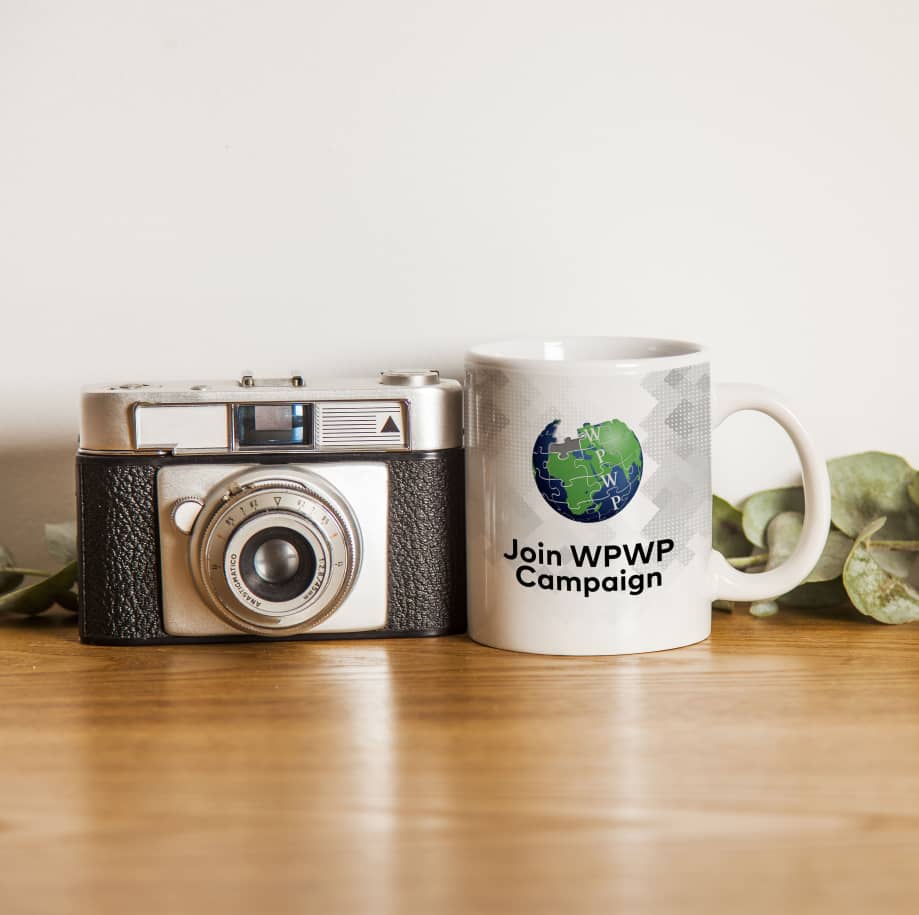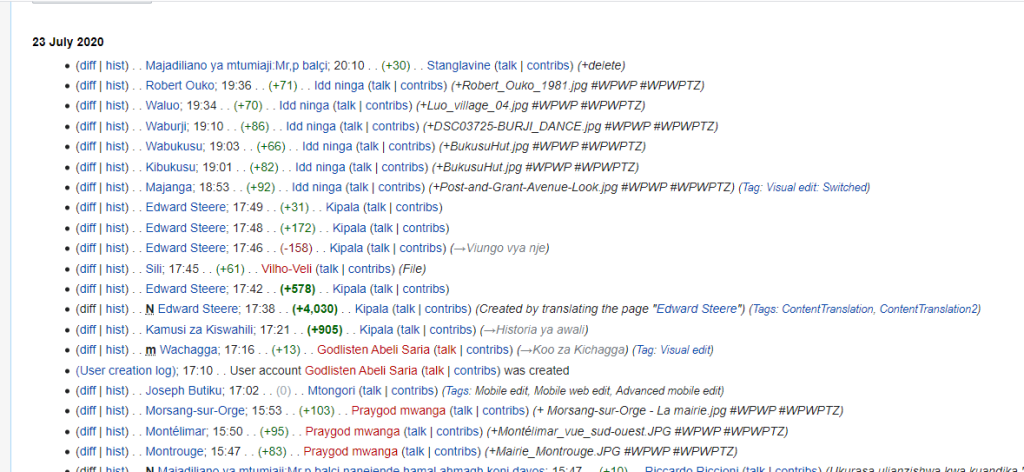By Alex Stinson, Senior Strategist, The Wikimedia Foundation

Wikimedia community members frequently engage with the regular reminders on social media and Wikimedia Commons of photography contests: Wiki Loves Africa and Wiki Loves Love at the beginning of the year, Wiki Loves Earth midway through the year, and Wiki Loves Monuments capping out the end of the year. There is always a vibrant flow of photography and calls to action—illustrating the diverse contexts of the Wikimedia movement.
But even with so much amazing photography: many of the images are never used to illustrate Wikipedia articles. Also, because of Wikidata, we know that local Wikipedias don’t always use these images even after they have been matched to a topic by other editors.
In April, a group of organizers, coordinated by Olatunde Isaac (User:T Cells) approached the Wikimedia Foundation campaigns team to describe an idea they had to solve that problem: The Wikipedia Pages Wanting Photos campaign. They wanted to invite editors on many language Wikipedias to add images to their own language articles, and use some of the images from Wiki Loves campaigns to do it.
There were a lot of signs that such a campaign could work well: a broad coalition of affiliates were interested, the desired impact was clear, the call to action was clear, and it could engage many editors in the movement. But there were also challenges: How to make the campaign accessible for newcomers, what tools should be used for tracking, how to design the competition part of the campaign, and identifying tools to improve the contribution workflow.
After a few brief advising sessions from our team, and a lot of work by the organizers, the campaign launched a month and a half later with huge success — within the first month they had nearly 40,000 edits, with smaller language wikis like Turkish and Swahili, and country competitions in Nigeria, Turkey, Tanzania and Macedonia producing large percentages of the edits. I sat down with some of the team at the end of July to check in on the progress of the campaign to better understand what worked and what didn’t.

Checking in Midway through the campaign
Alex: What do you think is making the campaign a success?
Sam Oyeyele: I believe that the biggest reason why the campaign turned out to be a success is due to the fact that it’s not a skill-intensive contest. Inserting images in articles is a very simple edit. As a result, so many people are inspired to participate, especially as they stand the chance of winning some prizes.
Alex: What challenges are you running into?
Sam: There were hiccups on English and French, as some administrators didn’t understand why they were seeing hashtags everywhere. Some others also had issues with vandalism problems from inexperienced users. At some point, edits containing the hashtags were blocked or almost blocked from the Wikipedias. I feel like those are expected — planning something for the first time — good insight for future years. There’s the need to figure out how to balance quality vs volume.
Isaac: We also realized that some local organizers were not keeping eyes on participants, watching recent changes and hashtags. Some participants were contributing to win a prize — while our aim was to improve the projects — so a handful of the users were speeding through the edits without paying attention to quality. We hoped that by decentralizing the campaign into local-country level campaigns, local editors could be training and monitoring new contributors. However, that didn’t happen in some communities: by watching the edits we realized that a lot of them were coming from Nigeria. We worked with the local organizers to retrain the new Nigerian contributors — and we think that resolved most of the problems.
Alex: Felix Nartey and I experienced something similar with #1lib1ref this year, some of the contributors to African Libraries Week sponsored by AFLIA, were too enthusiastic and didn’t realize that they were breaking rules. We ended up having to communicate heavily with the English Wikipedia community, and be honest with them about the challenges and our desire to make it better.
Mohammed Bachounda: On French Wikipedia, they briefly blocked the hashtag, at first, because they didn’t know what it was: thought it was spam; now the block has been removed — but it started a big discussion, largely resolved now, about how to engage with new contributors from contests. We needed the French communities to understand what the hashtag means — its kinda a technical challenge — the edit summary has no other signals to help other editors understand what the edits are for– so if a bunch of new contributors use it poorly, it looks like a bad pattern. We need to get better at notifying the on-wiki contributors that this campaign is coming.
Isaac: And I don’t think it’s a problem with prizes. Commons seems to have a better culture for handling the bad contributions in large volume from Wiki Loves contests.
Alex: You also ran into some problems with the Hashtags tool — the tool has always had a bit hacky, and maintained for #1lib1ref — the maintainer is working on that now. Why do you need the live tracking?
Sam: Not having the live tracking available, means that it’s hard for organizers needed to look at the local contributors
Isaac: When the tool has been working, I have had a couple good experiences doing some of the tracking, but it’s not available all the time and in some country level campaigns, local organizers were not monitoring the new editors.
Alex: How do you want to innovate in future rounds of the campaign?
Isaac: We were considering making the campaign more topical, but this could cause problems — topics may not reach the right audience. For example, Wiki Loves Africa may really work in Africa , but may not bring people from other regions. At the same time, the local campaigns were able to do this quite well: the Nigerian community has used a lot of images from the Wiki Loves Africa photos from the country. We noticed recently, in writing the report for Wiki Loves Africa — that a lot more photos were being used than previously. It means that the campaign is adding value and meeting the desired impact.
Sam: Focusing on a particular topic — like festivals, or arts, might help with streamlining something like assessment and it would help people to contribute to topics that aren’t “as interesting” to our current contributors.
Isaac: We also have to remember that Magnus’s tool seems to be driving a lot of the contribution. It would be worth exploring other tools for finding images that meet different topic areas. Finding photos is a really hard challenge for new people, who don’t know how to do a deep search on Commons
After a huge success

Towards the end of August, I contacted them about the huge success of the campaign: over 90k contributions by 593 contributors, on 272 wikis: it’s a huge scale. Very few editing-focused campaigns reach that breadth and depth of participation in the movement. I wanted to learn more about how the team was thinking about the impact and participation across different communities and languages.
Alex: It seems that the campaign continued to grow, with more newcomers joining the campaign — did you notice a change in who is contributing?
Isaac: Many of the participants were newcomers, and we saw a lot of participants who were women. During the Campaign in August, Wikimedia Canada tweeted that the majority of the participants from Canada were females. I noticed at least one female newcomer who added photos to over 3,000 articles. Adding photos to Wikipedia articles involves a few steps and it looks like many new users enjoy adding photos to articles because it’s simple. We also think it has an added benefit: these new users avoid harassment since they are unlikely to get into edit-wars with some established editors. There was also participation by some veterans Wikipedia editors. Many of them supported the new editor in learning to correctly add captions to images.
Alex: What’s next for the team? What questions do you have about how the campaign worked?
Shola: We want to ask some questions of the campaign:
1. What works well for the contest and how we can sustain them?
2. What are those things that we did not do, which ought to be part of the project work plan?
3. What didn’t work well for the contest and how do we plan to handle such things in the next edition?
4. WPWP is a tool driven project. Are we comfortable with the tool deployed for the campaign? And if No, what are we doing about it?
5. Significant number of contributors to the campaigns are newbies: Do we have a plan in place to manage their excesses on wiki to avoid vandalism or excessive contributions? And where that happens, what is our plan for managing such scenarios?
Isaac: We already have received feedback from different communities including the onwiki English and French language Wikipedia communities. We are documenting this feedback and we knew they would be very useful in improving the next editions of the campaign. We will also be sharing a survey with the local organizing teams and participants to collect more feedback to answer those questions by Shola. We want to evaluate the campaign and share our learning with the community. We are hopeful that the next edition of the campaign would be much more fun and diverse, once we address the concerns from the first edition.

Can you help us translate this article?
In order for this article to reach as many people as possible we would like your help. Can you translate this article to get the message out?
Start translation